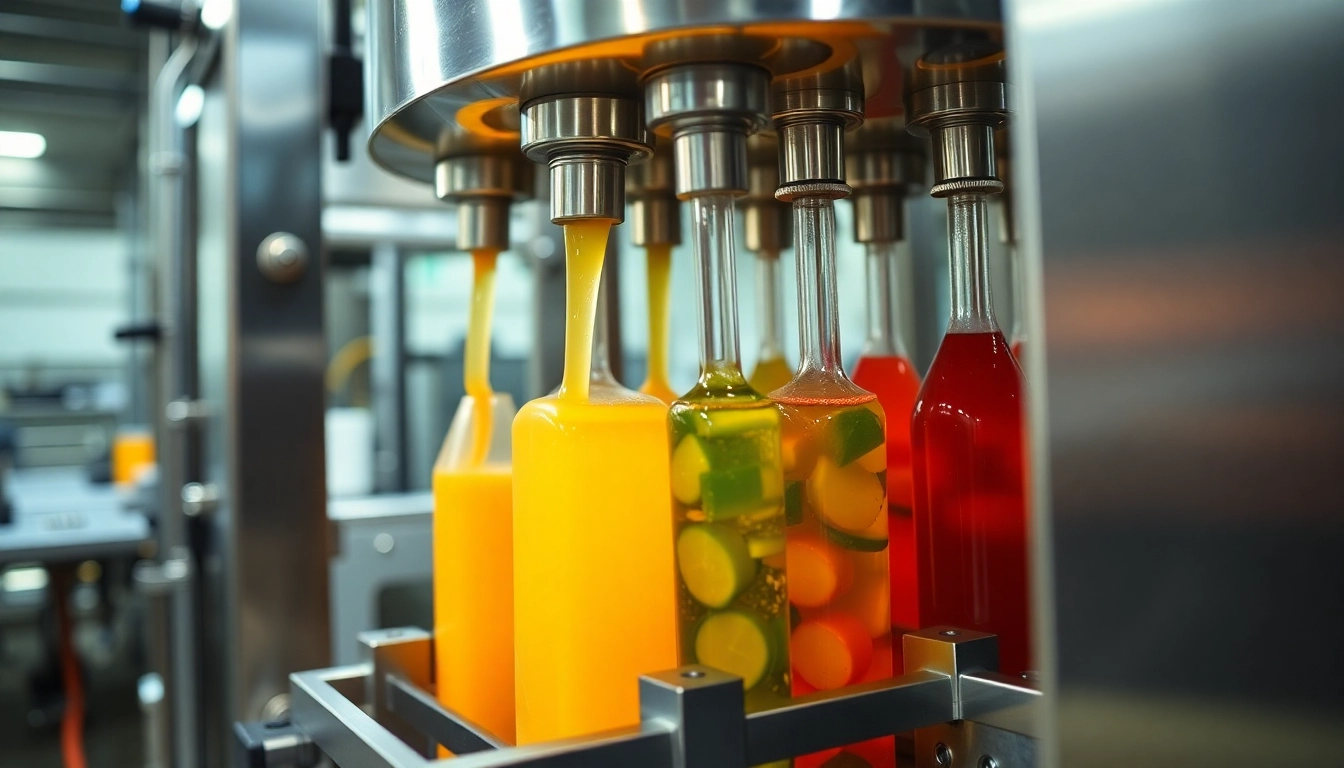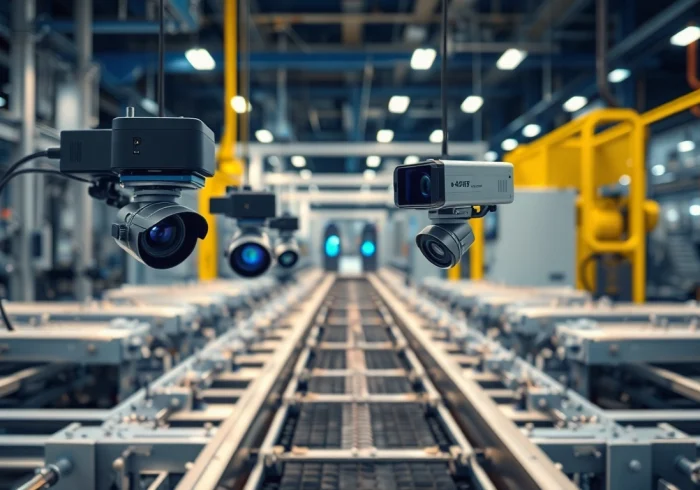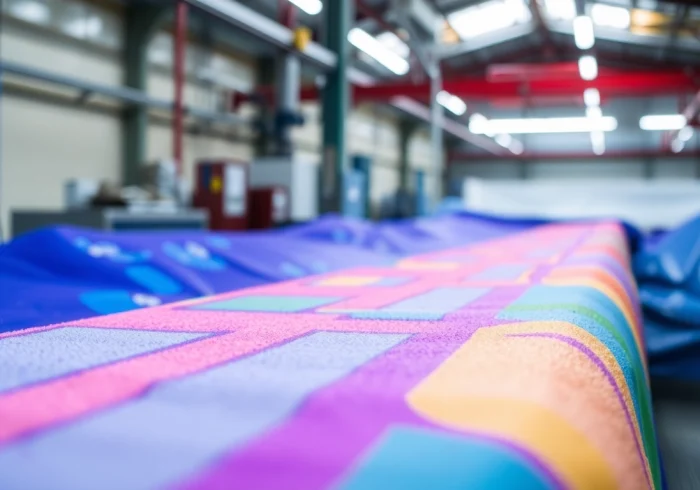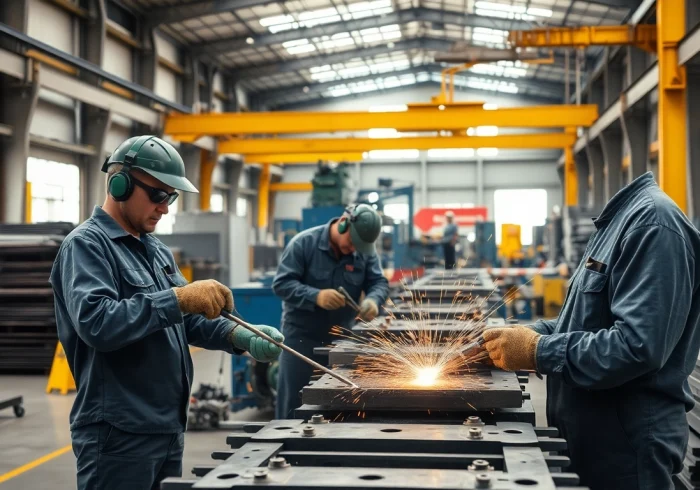Understanding Filling Machines
What is a Filling Machine?
A filling machine is a type of equipment used to dispense various types of products into containers, such as bottles, jars, or cans. These machines are integral to industries that require products to be packed efficiently and accurately. Filling machines can handle a wide range of materials, including liquids like water, oil, and sauces, as well as dry substances such as powders and granules. By ensuring precise and consistent fill levels, these machines enhance production efficiency and maintain quality standards.
Types of Filling Machines
Filling machines come in several types, each designed for specific applications, products, and packaging types. Here are some of the most common types:
- Liquid Filling Machines: Ideal for beverages and other fluids, these machines can further be categorized into volumetric, gravimetric, and piston-based systems.
- Tubular Filling Machines: These are used primarily for filling thick substances like creams and pastes into tubes.
- Powder Filling Machines: Specifically designed for filling powdered products, these machines can handle bulk powders and granulated products.
- Tablet Filling Machines: Used in pharmaceuticals, these machines pack tablets into various types of packaging.
- Automatic and Semi-Automatic Filling Machines: Automatic machines offer higher speed and efficiency, while semi-automatic machines provide more flexibility for various container sizes.
Benefits of Using Filling Machines
Filling machines bring numerous benefits to manufacturers seeking efficiency in the packaging process:
- Increased Efficiency: Automating the filling process reduces manual labor, thereby accelerating production time and increasing output.
- Consistent Accuracy: High precision filling minimizes product wastage and ensures consistent fill levels, which is crucial for industries like food and pharmaceuticals.
- Customization: manufacturers can tailor filling machines to accommodate different products and container sizes.
- Safety and Hygiene: Modern filling machines are designed with hygiene in mind, utilizing materials that are easy to clean and sterilize, thus minimizing contamination risks.
- Cost-Effective: Over time, investing in filling machines can lead to decreased labor costs and increased production rates, resulting in significant savings.
Leading Filling Machine Manufacturers
Accutek Packaging Equipment Company
Accutek is a prominent player in the filling machine manufacturing industry, recognized for providing a diverse range of filling equipment capable of handling nearly any product type. Their machines are designed with flexibility in mind to accommodate various container types and sizes.
Accutek’s offerings, as highlighted on their website, Filling Machine Manufacturers, include a variety of liquid filling machines like piston fillers, overflow fillers, and pressure fillers, all engineered to meet the stringent demands of modern packaging. Furthermore, their commitment to innovation keeps them at the forefront of technological advancements in the sector.
Cozzoli Machine Company
Cozzoli Machine Company specializes in various packaging machinery, including liquid filling machines, capping equipment, and washing systems. With a focus on quality and durability, Cozzoli designs its machines to facilitate a wide range of industry applications, catering to both small-scale producers and high-volume manufacturers.
Their technology integrates sophisticated features aimed at increasing production efficiency while ensuring product safety and integrity.
Oden Machinery
Oden Machinery has established itself as a trusted manufacturer of filling machines, particularly for bottle filling applications in different sectors. Their machines are celebrated for their reliability and user-friendly interfaces.
Featuring durable construction, Oden’s filling systems are designed to handle demanding environments and offer seamless integration with existing packaging lines. For businesses seeking versatile and efficient solutions, Oden offers a compelling product line.
Choosing the Right Filling Machine
Factors to Consider
Selecting the appropriate filling machine is crucial to the success of any packaging operation. Several factors should be taken into account:
- Type of Product: Different products require different filling methods. Understanding the viscosity and consistency of the product will guide the selection, whether it is a liquid, powder, or paste.
- Container Type: Consider the type of container being used, as some machines are better suited for specific shapes, sizes, and materials.
- Production Volume: High-throughput operations may benefit from fully automated machines, while smaller producers might find semi-automated machines sufficient.
- Budget: Set a clear budget for both initial investment and ongoing operational expenses.
- Space Requirements: Evaluate the available space in the facility to ensure the machine will fit and maintain operational efficiency.
Comparing Different Manufacturers
When choosing a filling machine, comparing among various manufacturers is essential. Consider factors such as:
- Reputation: Research the manufacturers within the market and understand their standing through customer testimonials and reviews.
- Service and Support: Evaluate the support services provided, including maintenance, repairs, and customer service responsiveness.
- Warranty and Guarantees: Look for manufacturers who provide warranties on their machines and components as a sign of quality assurance.
- Customization Options: Select a manufacturer that offers tailored solutions to meet specific production needs.
Understanding Your Specific Needs
Before committing to a purchase, it’s vital to perform a thorough assessment of your operational needs:
- Volume and Speed Requirements: Determine the number of bottles or containers required per hour and select a machine that can meet or exceed those numbers.
- Product Characteristics: Assess the nature of the product—its consistency, reaction with materials, temperature sensitivity, and whether it requires special handling.
- Regulatory Compliance: Ensure the filling machine aligns with industry regulations, especially in food and pharmaceutical sectors.
Innovations in Filling Machine Technology
Automation and Efficiency
Automation has transformed the filling machine sector, resulting in increased efficiency and reduced labor costs. Modern filling machines utilize sensors, PLC technology, and advanced robotics to streamline the packaging process. These machines can automatically adjust fill levels based on sensor readings, optimize speed according to line conditions, and perform routine checks to ensure quality control. Such advancements not only boost production rates but also enhance overall operational reliability.
Smart Features in Modern Machines
The latest filling machines are equipped with smart technology, enabling remote monitoring and control through connected systems. Key features include:
- Data Analytics: Machines gather data on production rates, potential bottlenecks, and equipment performance, which can be analyzed for continuous process improvement.
- Real-Time Adjustments: Operators can modify settings dynamically based on production conditions, enabling greater flexibility and efficiency on the line.
- HMI Interfaces: Intuitive Human-Machine Interfaces simplify operator interactions, making it easier to oversee production and resolve issues swiftly.
Future Trends in Filling Industry
As technology continues to evolve, several trends are expected to shape the future of filling machines:
- Increased Automation: Expect further advancements in AI and machine learning to optimize filling processes.
- Sustainability: Manufacturers are focusing on environmentally-friendly solutions, including energy-efficient machines and reduced waste in the filling process.
- Modular Designs: Flexible and scalable machinery that can be easily reconfigured to accommodate different packaging needs will become more prevalent.
Maintenance and Care for Filling Machines
Routine Maintenance Tips
Keeping filling machines in optimal condition is vital to ensuring longevity and reliable performance. Here are some regular maintenance tips:
- Daily Inspections: Before beginning the production schedule, perform checks on the machine for any visible wear, loose parts, or leaks.
- Scheduled Cleaning: Develop a cleaning regimen according to the manufacturer’s guidelines, using appropriate cleaning agents that won’t harm machine components.
- Lubrication: Regularly lubricate moving parts to prevent wear and reduce friction, which can lead to mechanical failures.
Common Issues and Solutions
Even with regular maintenance, issues may arise. Common problems include:
- Incomplete Filling: This may occur if there are blockages or mechanical malfunctions—initially check filters, seals, and fill nozzles.
- Container Deformation: Often caused by excessive pressure; ensure settings align with container specifications.
- Inconsistent Fill Levels: Investigate sensor calibration and inspect for wear and tear in pump mechanisms.
Choosing the Right Service Provider
Choosing a reliable service provider for machine maintenance and repairs is crucial to sustaining operational efficiency. Look for organizations that offer:
- Specialized Experience: Technicians should have experience with your specific type of filling machine and understand its intricacies.
- Timely Services: Providers that offer prompt response times can reduce downtime and maintain productivity.
- Comprehensive Solutions: Opt for providers who can handle regular maintenance, emergency repairs, and comprehensive parts replacements.



